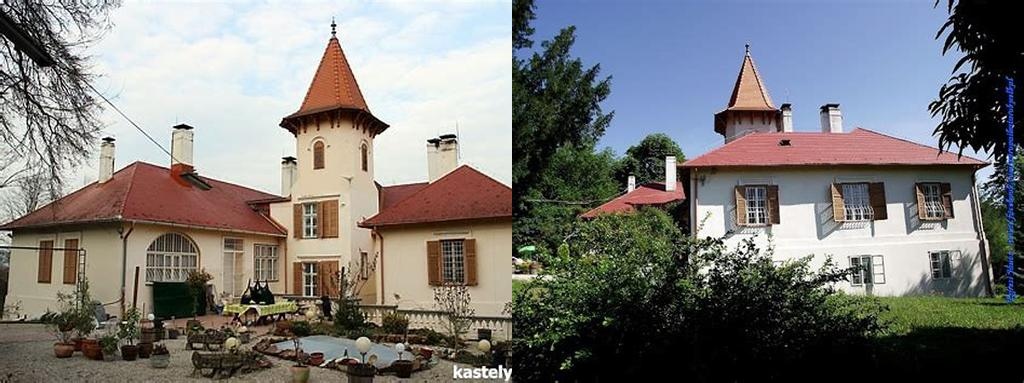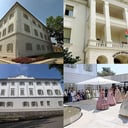
Szentkirályi-kúria, quietly nestled in the heart of Zalaapáti, is like a time capsule flanked by leafy trees and whispers from centuries past. Unlike stately homes that screech for your attention from the roadside, this manor keeps its stories slightly tucked away, luring in curious visitors with an understated grace. Once through the gates, you’re enveloped in a tranquil atmosphere—a far cry from the clamor of urban Hungary. Here, the history breathes softly, inviting a closer look at a mansion whose roots dig deep into the social, architectural, and even eccentric fabric of the region.
Let’s stroll back to the late 18th century. This was the era of the Enlightenment, but in Zalaapáti, the real drama centered around rising aristocratic families. The Szentkirályi family, influential landowners and key figures in the county, commissioned the mansion as their family seat. The retention of their name in the building attests to just how intertwined they became with local culture and development. But this wasn’t just a display of wealth and power—there was an intimacy to their vision. The mansion, with its neoclassical façade, exudes a stately proportion without crossing into gaudiness. The main building is symmetrical and elegant, with rows of tall windows that let the sunlight dapple the inlaid parquet floors every morning. The original plans were ambitious but tasteful, seeking to blend regional traditions with the cosmopolitan whispers that drifted in from Vienna and Budapest.
Walking the perimeter of the estate even today, you’ll notice how the park still attempts to honor the original landscaping—a mix of native and planted species. Over the years, horse-chestnuts aligned themselves along dusty paths, and vestiges of rose gardens flirted with stone statues. It is easy to imagine Jakab Szentkirályi, one of the mansion’s earliest owners, pacing between the library and the orchard, deep in thought about estate affairs or perhaps lost in a favorite volume. The family became renowned for their hospitality; summer balls spilled out onto the terraces, and the scent of acacia blossoms would mingle with strains of violin music.
The walls of the mansion, although subjected to the inevitable wear and tear of time, retain the polish and character that come only from genuine living history. These are not just rooms, but little theaters of memory. In the grand salon, faded frescoes remain from a time when political conversation and gossip about distant wars would fill the air. The once-bustling kitchen could tell tales of feasts prepared for visiting writers, county officials, and even—on one audacious occasion—members of the Batthyány family, who arrived with a retinue of horses and a taste for brandy. Today, many of the original furnishings are gone, but a few cabinets, with intricate woodworking, still anchor the rooms in their heritage.
To visit the Szentkirályi-kúria is, in many ways, to step into the lulls and crescendos of rural Hungarian gentry life. Yet the building’s role has not been static. During the turbulence of the 20th century, its narrative wove through not only quiet prosperity but also hardship. Nationalization after World War II saw elegant chambers transformed into offices and community rooms, and yet somehow, the mansion survived the more ruthless waves of modernity. For a period, the estate even served as a school, echoing once more with the noise of youthful energy—a poignant cycle, considering how many family members first learned to read within those same walls.
If you visit, don’t hurry through. Allow yourself a moment to absorb the creak of polished floorboards and the way the midday light filters through aged glass. Wander beneath the ancient trees and trace with your eyes the outlines of what was once a stately carriage path. Locals will tell you stories—some outlandish, some melancholic, many proud—about the mansion. Each tale builds another layer upon the mystique of Szentkirályi-kúria, from the ghostly rumors of a forlorn governess to accounts of rare books hidden away in moldy cellars, still awaiting rediscovery.
There is something gently spellbinding about this place, something that won’t reveal itself at a cursory glance. Zalaapáti’s Szentkirályi-kúria is not just another relic—it’s a tapestry of lived moments, patient endurance, and quiet resilience. With each passing season, the mansion reminds us that history isn’t just the grandeur of kings and queens, but also the echo of footsteps across an old salon, the memory of laughter shimmering through sunlight, and the enduring spirit of a family whose name still means something in the rolling hills of western Hungary.





